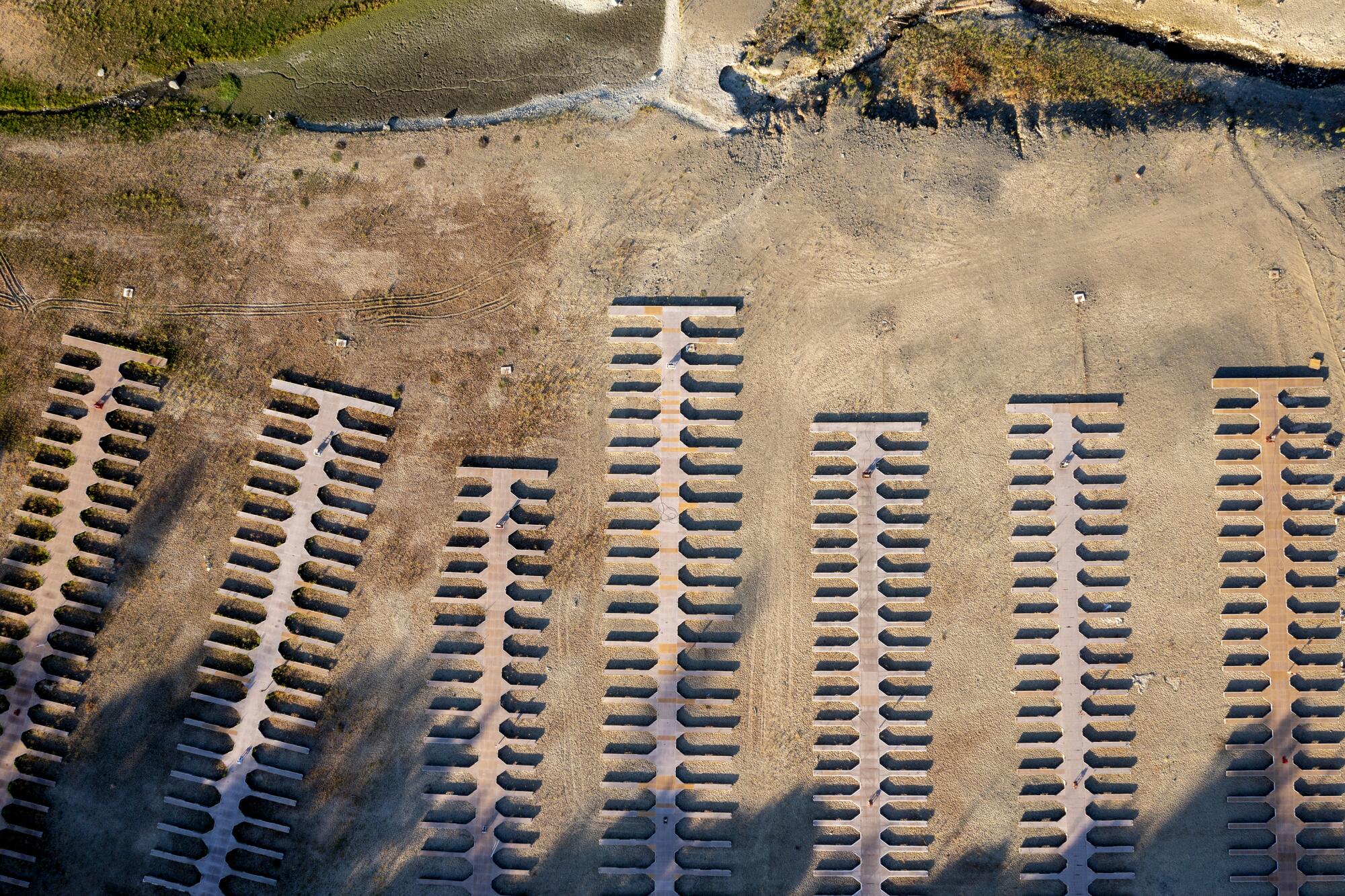
As the West descends deeper into drought, climate and water experts are growing increasingly alarmed by California’s shriveling reservoirs.
Photos of Lake Oroville, Folsom Lake, Trinity Lake and Lake Shasta, taken by Times photographer Brian van der Brug using a drone, unveil the harsh reality of the Golden State’s not-so-golden drought.
On Wednesday, Lake Shasta — the largest reservoir in the state — held a scant 1.55 million acre-feet of water, according to the U.S. Bureau of Reclamation, or about 34% of its capacity. Jeffrey Mount, senior fellow at the Public Policy Institute of California’s Water Policy Center, said “everybody should be concerned” by what they’re seeing.
“The reservoir levels we’re looking at are near-record low, with all the prospects that they will actually be record low by the end of the summer,” he said. “The mountains are dried out. The sponge is completely dry.”
— Lake Oroville —

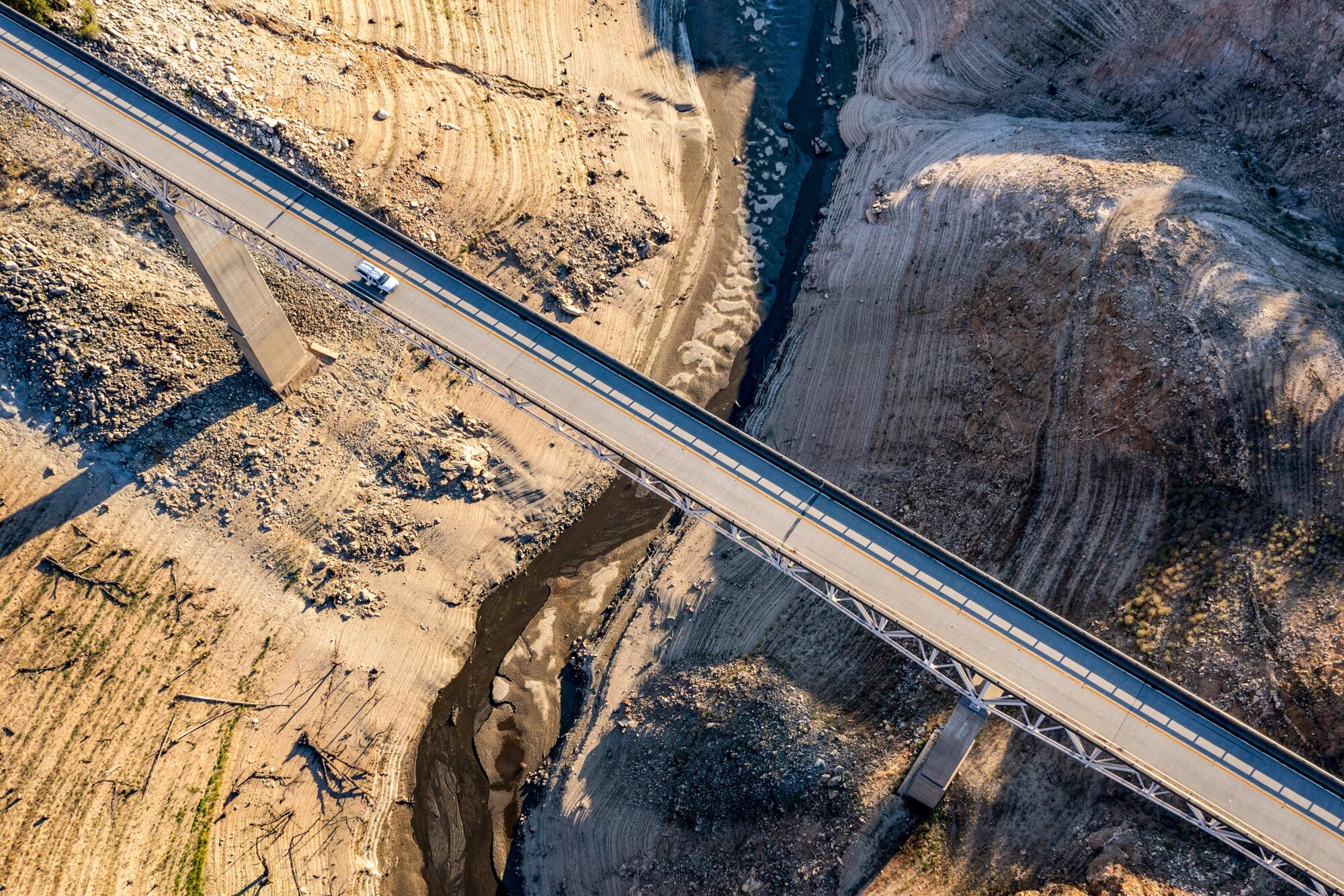
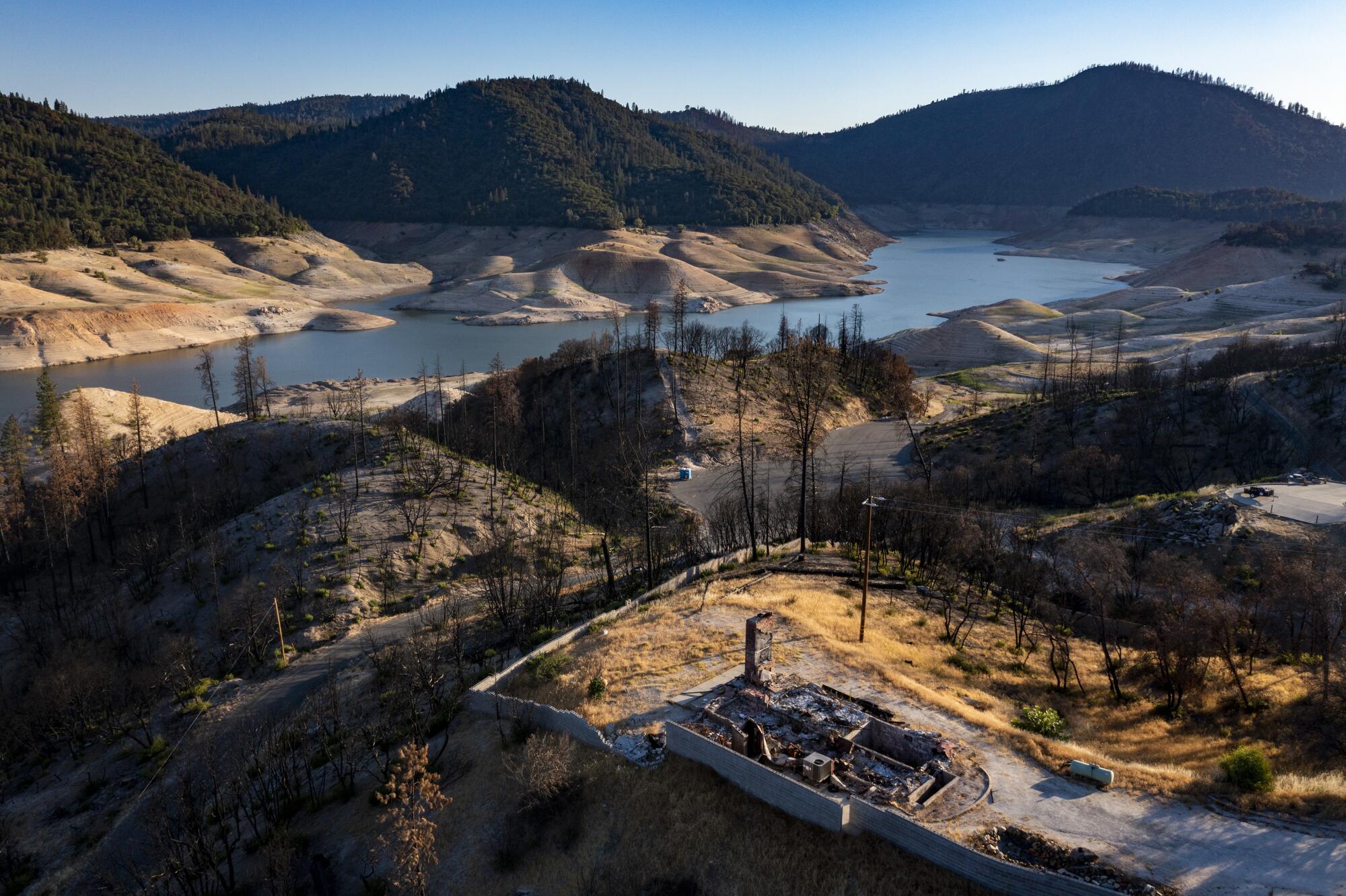
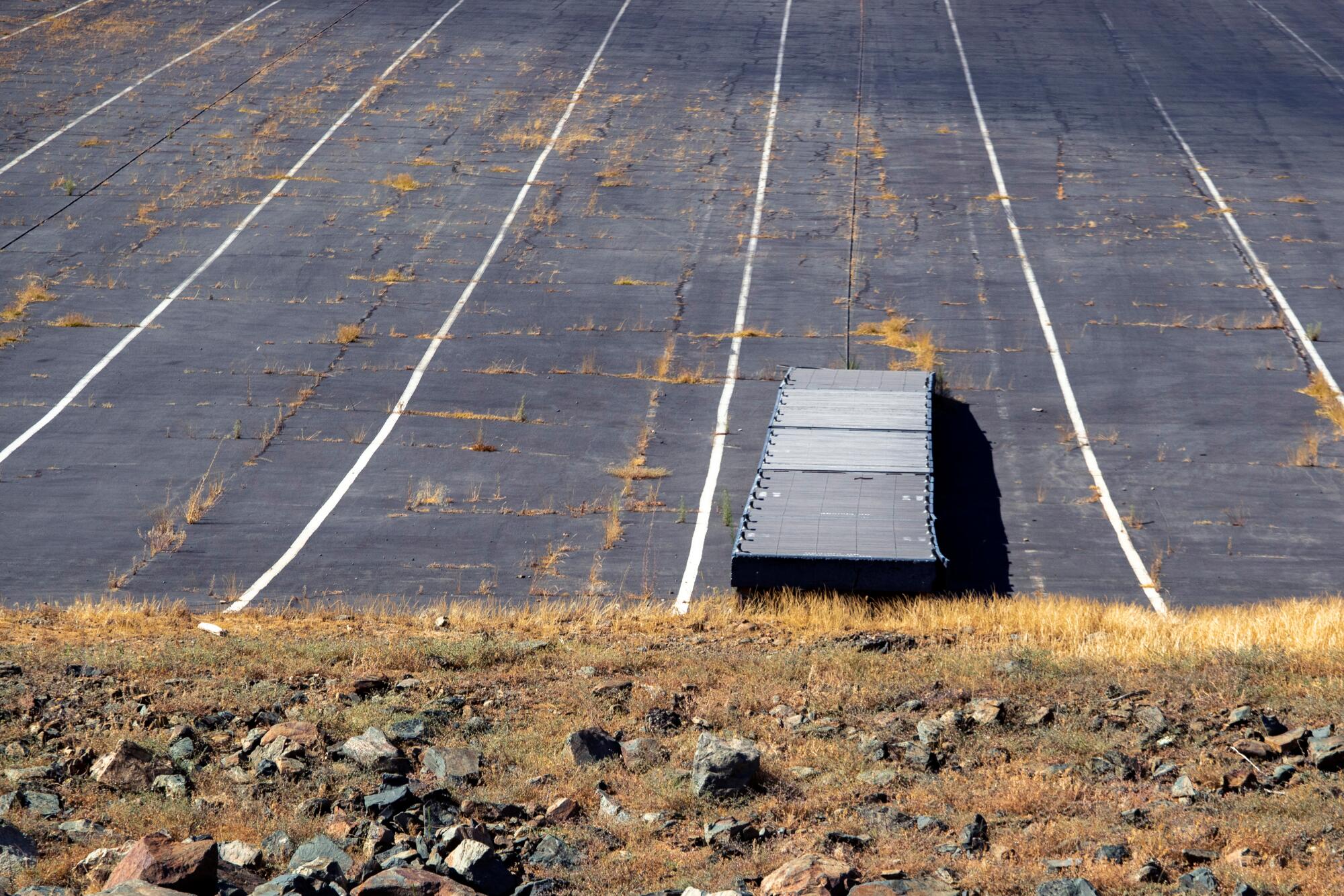
Many scientists studying California’s drought point to the drought of 1976-’77 as a “worst-case scenario” benchmark. That drought brought Lake Oroville to its all-time record low of 646 feet above sea level.
On Wednesday, the lake sat just over 658 feet above sea level, or 27% of its total capacity, according to the California Department of Water Resources.
Officials said plummeting reservoir levels could soon force Oroville’s hydroelectric power plant offline. The plant, which opened in the late 1960s, has never been forced offline by low lake levels before.
— Folsom Lake —
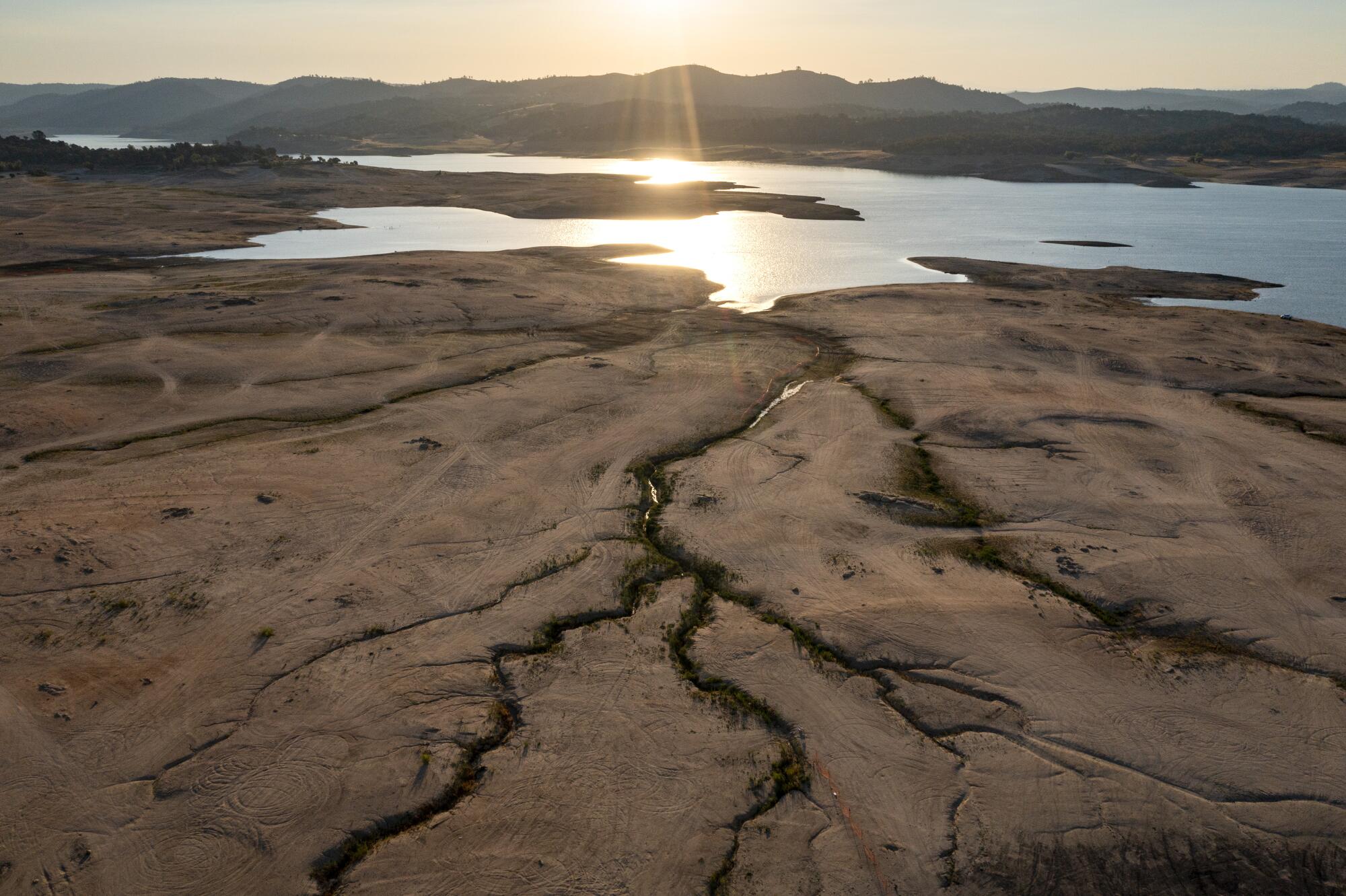
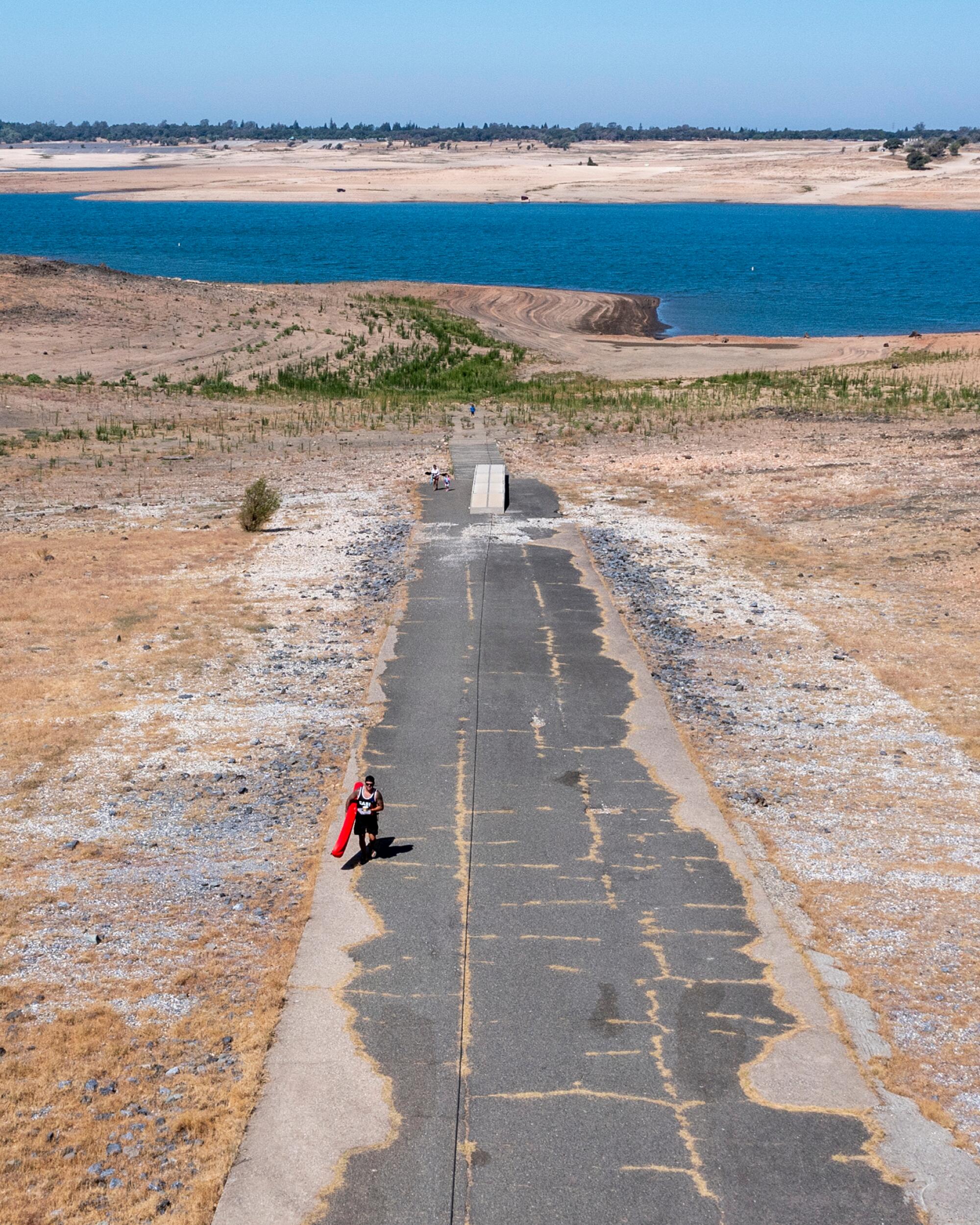
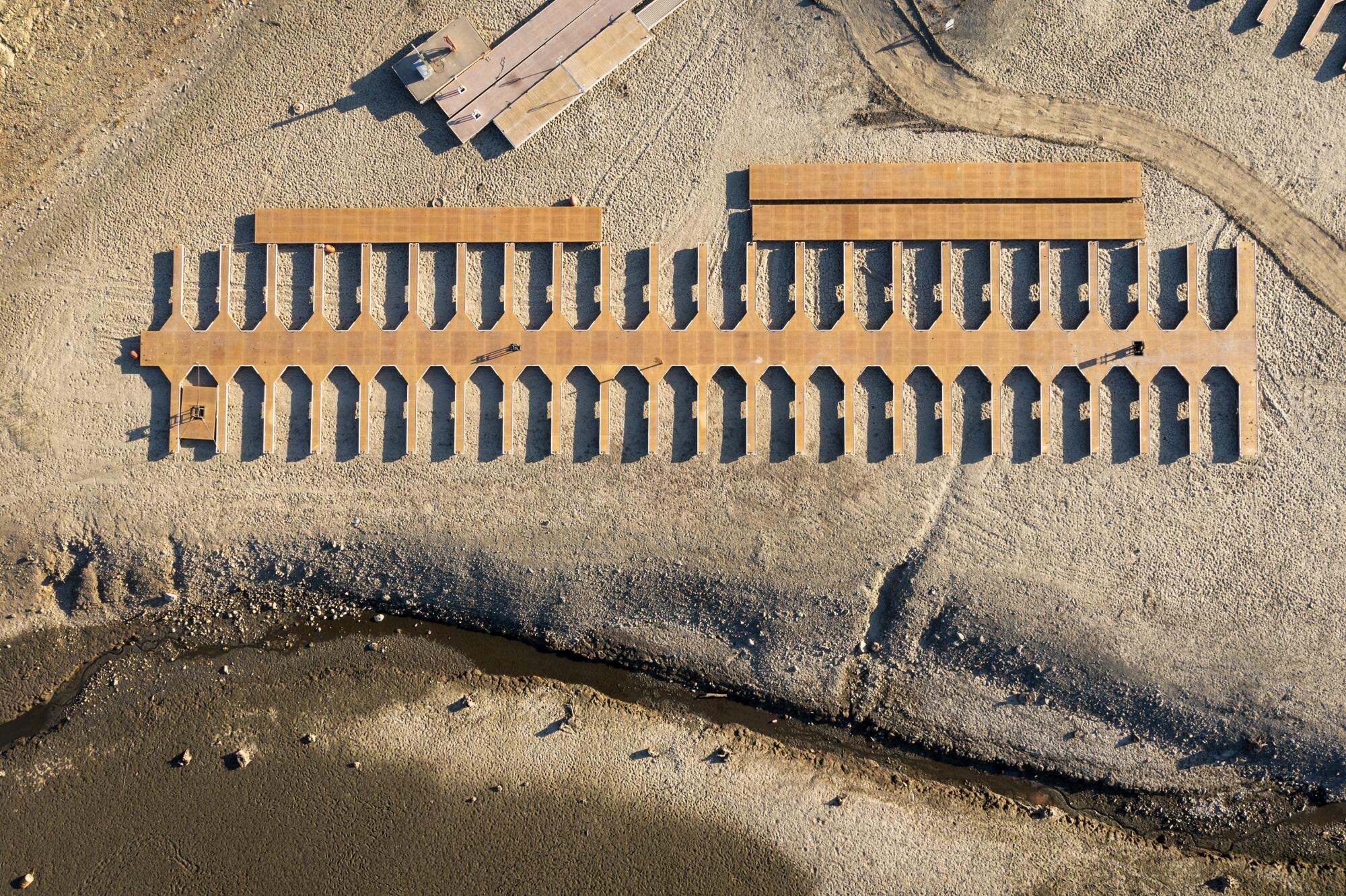
The most recent rain year, which ended in June, was the seventh-driest in Los Angeles’ 144 years of records, according to Golden Gate Weather Services, and the third-driest on record in the Northern Sierra region.
But officials in March warned that already low snowpack levels were dwindling during what they anticipated would be a critically dry year for the state. By June, the Department of Water Resources found that the statewide snowpack was at a grim 0.1 of an inch, or 0% of normal.
Already, farmers in the state have faced such dry conditions that many have begun fallowing fields, pulling out vines and trees, and leaving empty land that once flourished.
— Trinity Lake —

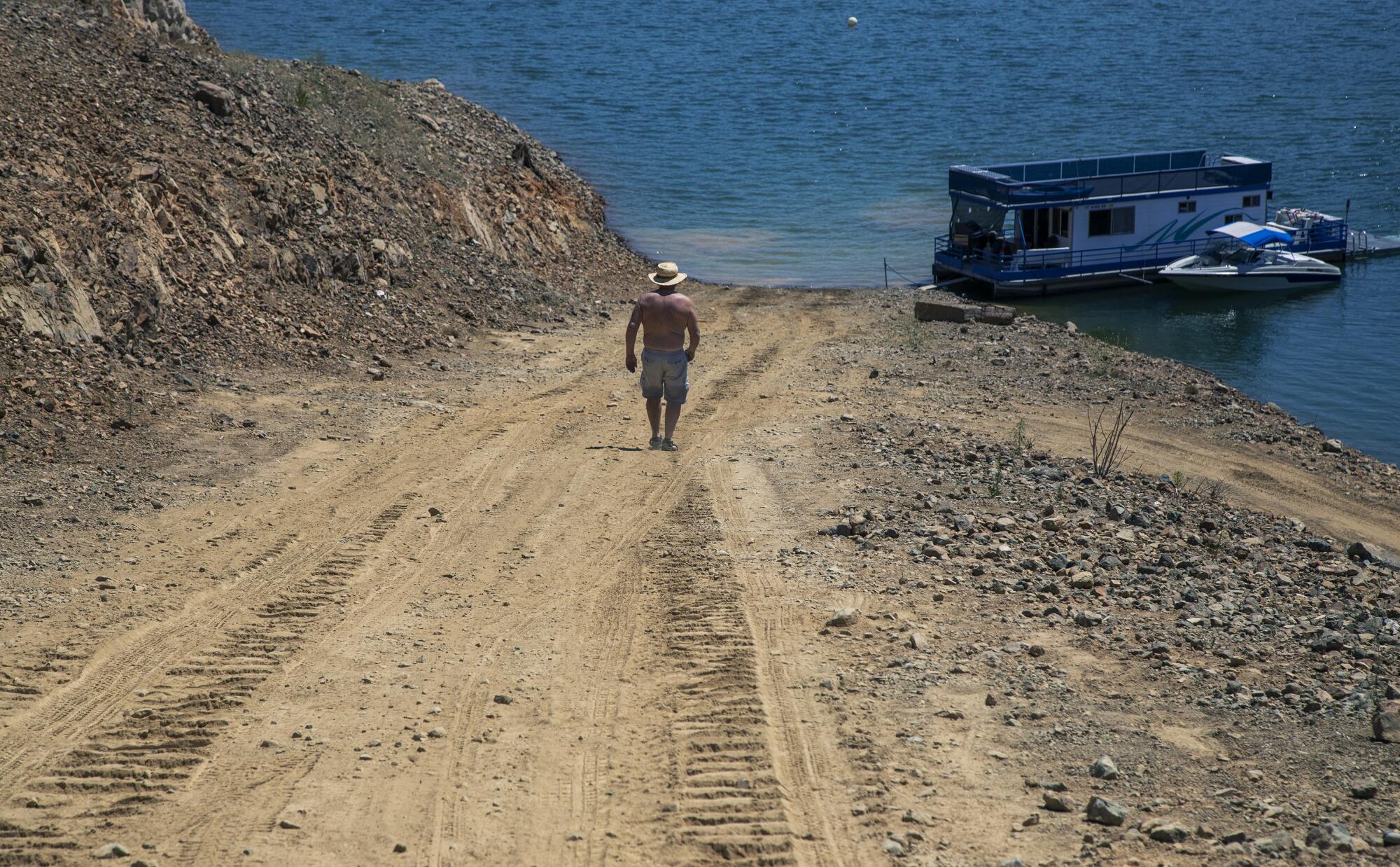
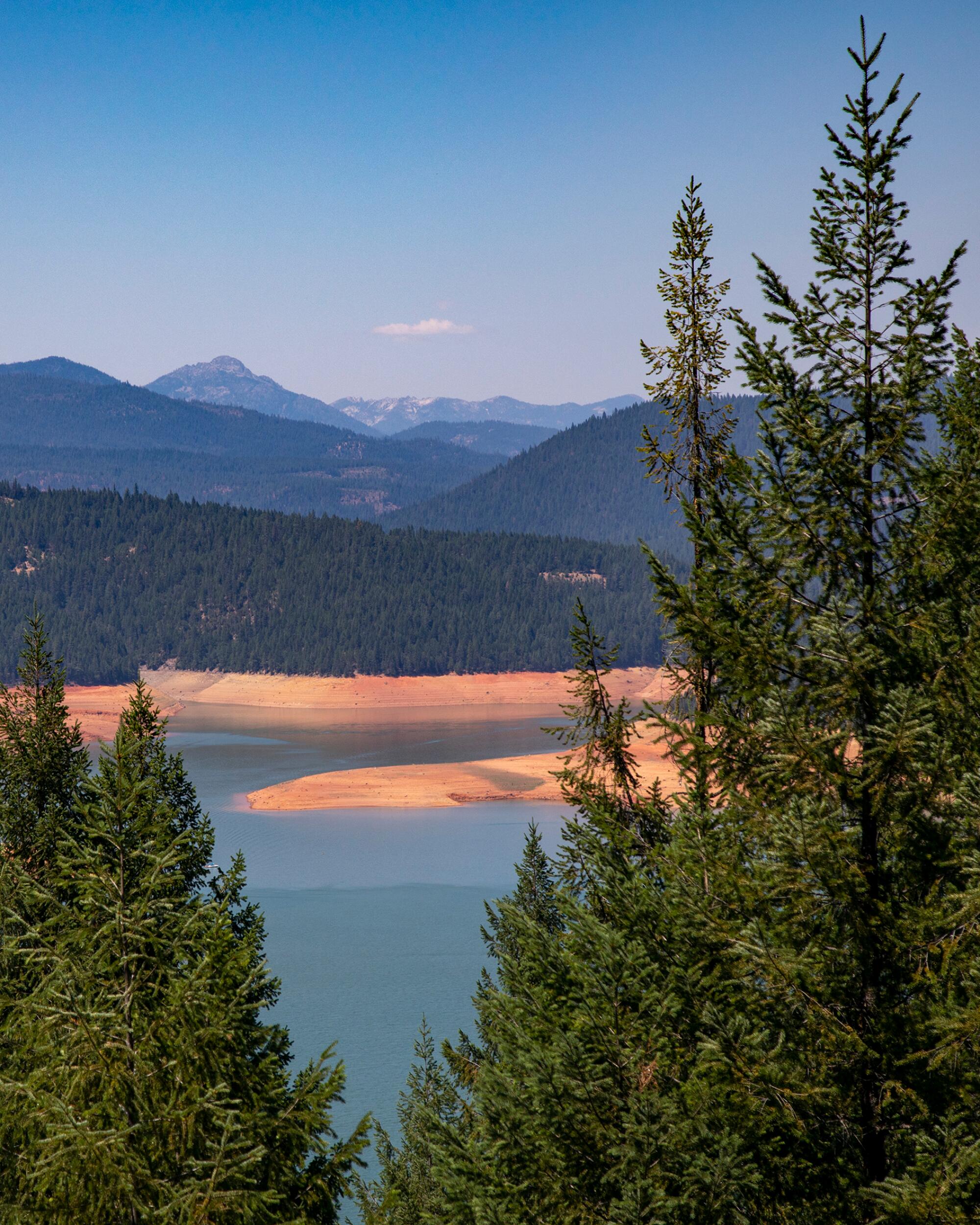

— Lake Shasta —
The drought conditions have grown so worrisome that Gov. Gavin Newsom this month asked Californians to voluntarily cut back on water consumption by 15%.
The governor also issued a regional drought state of emergency in 50 California counties, or roughly 42% of the state’s population.
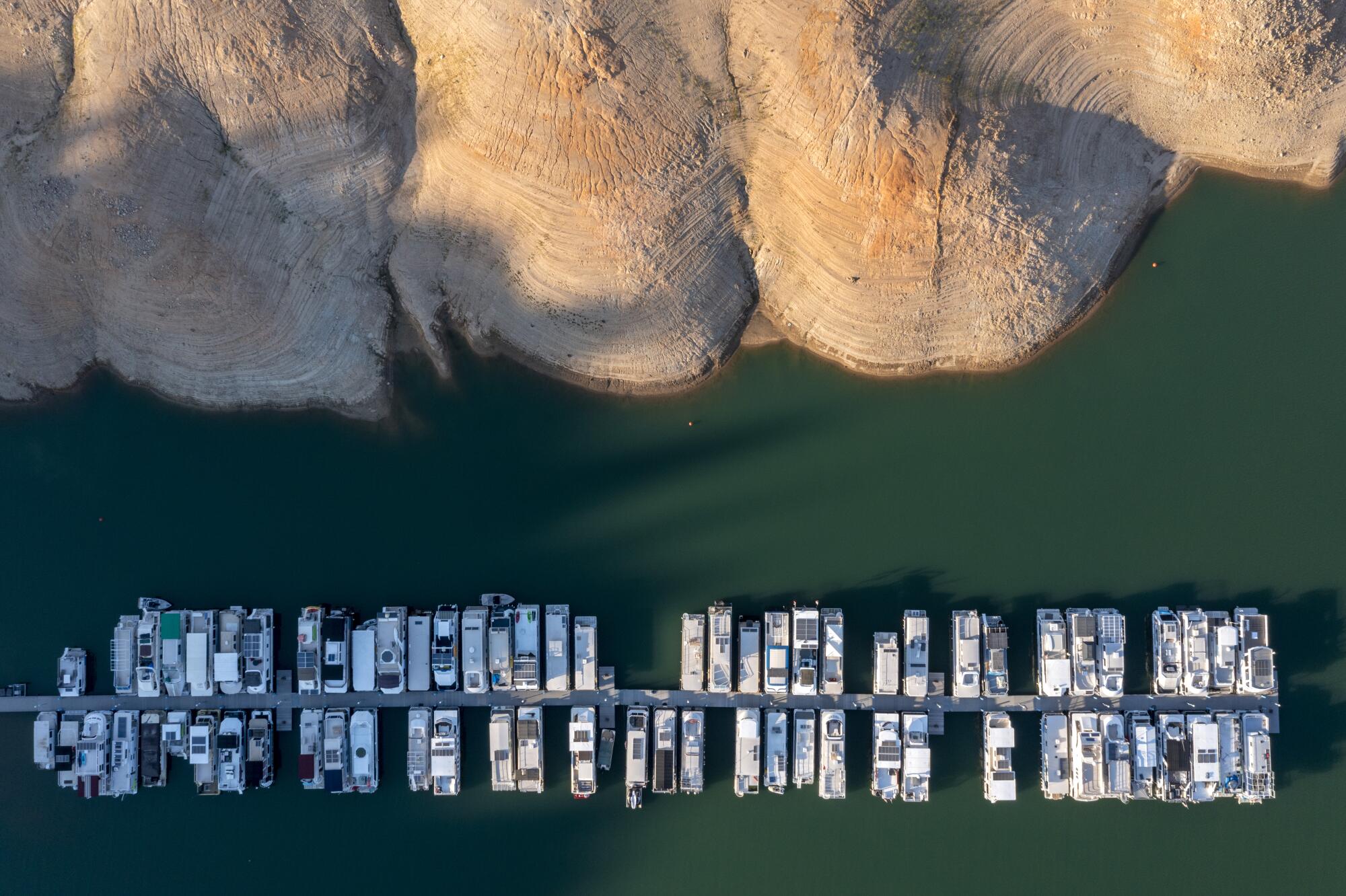
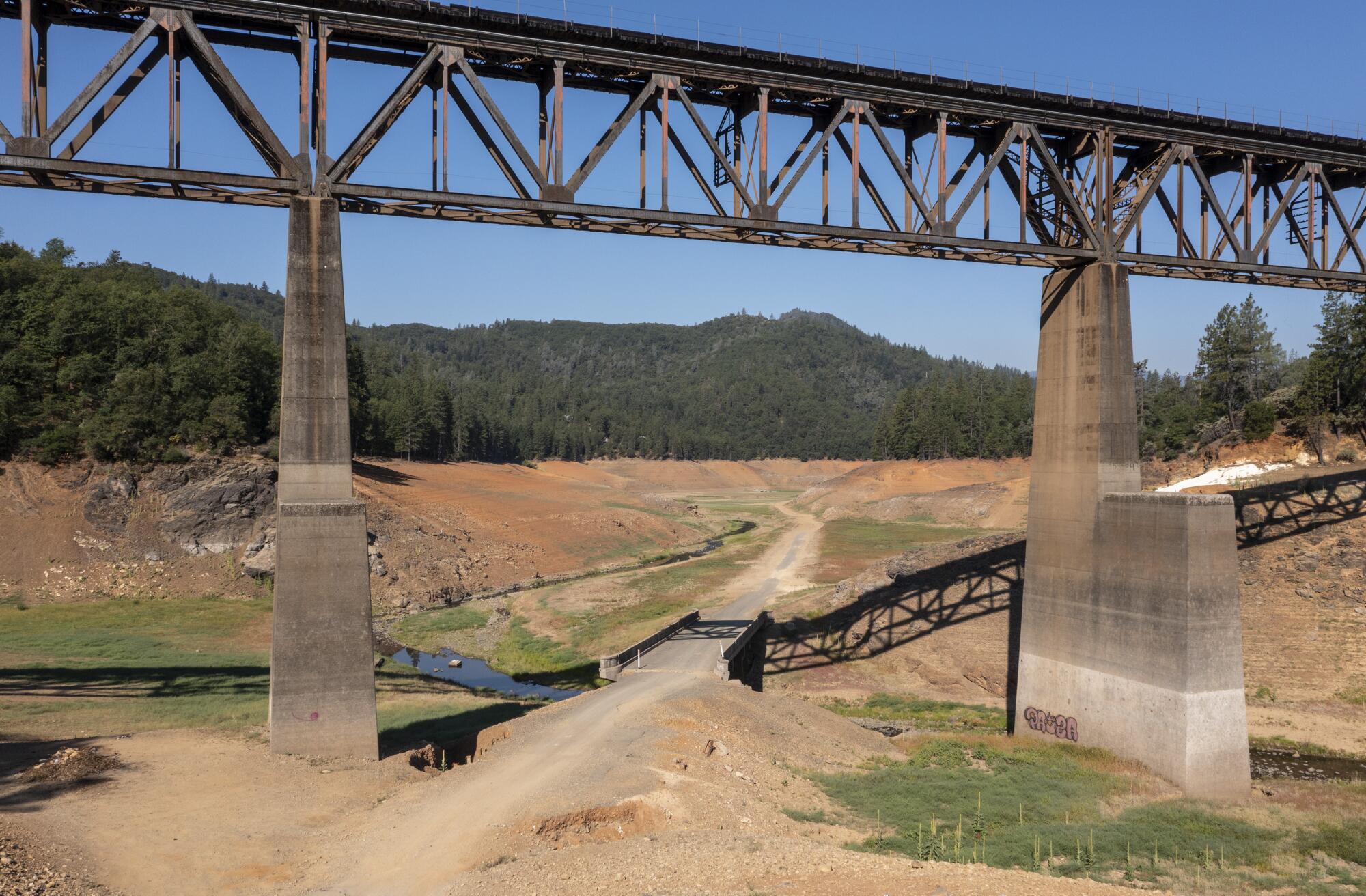
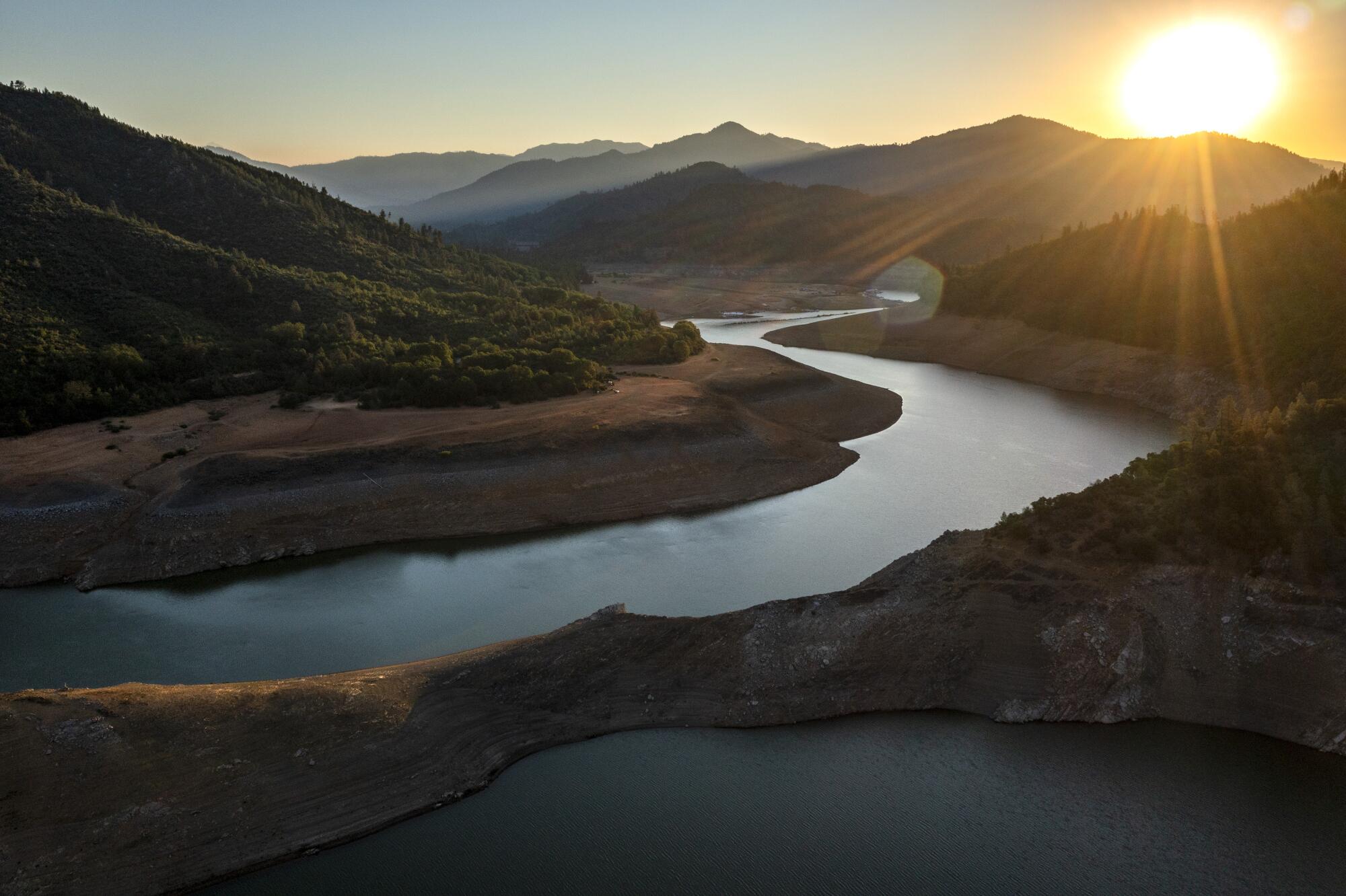
More to Read
Start your day right
Sign up for Essential California for news, features and recommendations from the L.A. Times and beyond in your inbox six days a week.
You may occasionally receive promotional content from the Los Angeles Times.







